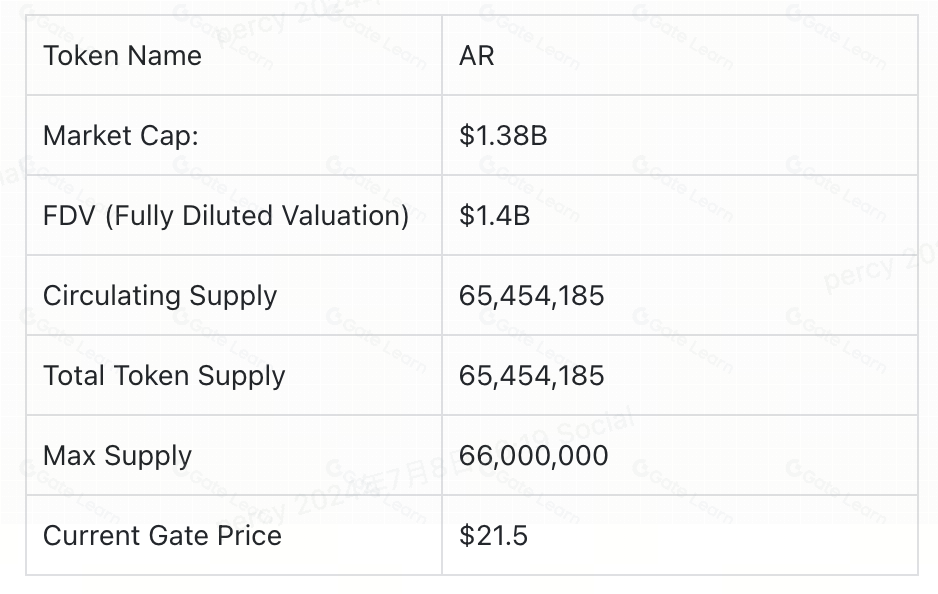Arweave (AR) Research Report
Project Name: Arweave
Tag: $AR
Type: Depin
Introduction
Arweave is a decentralized data storage protocol that enables permanent storage and global access through its Blockweave and SPoRA consensus, addressing the scalability, data availability, and cost issues present in blockchain data storage.
Technical Features
Blockweave
The foundation of the Arweave data network is based on the block generation model of Blockweave, an improvement on the Bitcoin network. In the mesh structure of Blockweave, each block is linked not only to the previous block but also to a randomly recalled block from the blockchain’s past history. The recall block is determined deterministically but unpredictably by the hash value and height of the previous block. When miners want to mine or validate new blocks, they need access to the information of the recall block.
SPoRA Consensus
Arweave upgrades PoA consensus to Succinct Proofs of Random Access (SPoRA). Compared to PoA, SPoRA increases the weight of data retrieval speed in block rewards while reducing the weight of block generation probability for miners. To improve data access speed, miners will prefer to store data locally rather than in low-cost data centers like centralized cloud storage providers. Under SPoRA architecture, block distribution is more decentralized and efficient, and the probability of block loss in the Arweave network is smaller than the probability of a private key collision.
[图片]
Wildfire
At the P2P network layer, Arweave introduces a method called Wildfire. Nodes in the network score their neighboring nodes based on the amount of data received and response speed, prioritizing higher-ranked peers for requests. Higher-ranked nodes have higher credibility, a greater chance of block generation, and a higher likelihood of obtaining scarce blocks. This approach enhances bandwidth and server stability.
AR Token
Transaction Fees: Users who want to store data on the network pay storage fees using AR tokens.
Miner Rewards: Miners receive rewards for mining, storing, and providing data retrieval services.
Arweave’s permanent storage relies on economic incentives, making its reward mechanism crucial for encouraging miner participation in the Arweave ecosystem. AR holders are passive participants and cannot earn rewards through staking. The demand for Arweave corresponds to the user storage amount, and while the price elasticity of Arweave demand is uncertain, it functions in a “free” market where user payment for storage tends toward minor costs and generates profits over time.
Key Metrics
 ](https://s3.ap-northeast-1.amazonaws.com/gimg.gateimg.com/learn/e42afe394a046b864a79a08bbc89122418601fee.jpeg)
Tokenomics
Arweave’s total supply of 65,454,185 tokens will be gradually released over 4.5 years:
- Reserve Fund: 26.5%
- Public Sale: 1.1%
- Private Sale: 19.5%
- Ecosystem Development: 19.1%
- Team: 13%
- Seed Round: 10.8%
- Strategic Partnerships: 7.1%
- Advisors: 2.9%
Community / Background
- Twitter Followers: 99,700+
- Discord Members: 16,200+
Arweave has completed two rounds of financing, raising a total of $13.3 million, led by A16z, USV, Coinbase, and Framework Ventures, with participation from OpenSea and Race Capital.
Arweave (AR) Research Report
Project Name: Arweave
Tag: $AR
Type: Depin
Introduction
Arweave is a decentralized data storage protocol that enables permanent storage and global access through its Blockweave and SPoRA consensus, addressing the scalability, data availability, and cost issues present in blockchain data storage.
Technical Features
Blockweave
The foundation of the Arweave data network is based on the block generation model of Blockweave, an improvement on the Bitcoin network. In the mesh structure of Blockweave, each block is linked not only to the previous block but also to a randomly recalled block from the blockchain’s past history. The recall block is determined deterministically but unpredictably by the hash value and height of the previous block. When miners want to mine or validate new blocks, they need access to the information of the recall block.
SPoRA Consensus
Arweave upgrades PoA consensus to Succinct Proofs of Random Access (SPoRA). Compared to PoA, SPoRA increases the weight of data retrieval speed in block rewards while reducing the weight of block generation probability for miners. To improve data access speed, miners will prefer to store data locally rather than in low-cost data centers like centralized cloud storage providers. Under SPoRA architecture, block distribution is more decentralized and efficient, and the probability of block loss in the Arweave network is smaller than the probability of a private key collision.
[图片]
Wildfire
At the P2P network layer, Arweave introduces a method called Wildfire. Nodes in the network score their neighboring nodes based on the amount of data received and response speed, prioritizing higher-ranked peers for requests. Higher-ranked nodes have higher credibility, a greater chance of block generation, and a higher likelihood of obtaining scarce blocks. This approach enhances bandwidth and server stability.
AR Token
Transaction Fees: Users who want to store data on the network pay storage fees using AR tokens.
Miner Rewards: Miners receive rewards for mining, storing, and providing data retrieval services.
Arweave’s permanent storage relies on economic incentives, making its reward mechanism crucial for encouraging miner participation in the Arweave ecosystem. AR holders are passive participants and cannot earn rewards through staking. The demand for Arweave corresponds to the user storage amount, and while the price elasticity of Arweave demand is uncertain, it functions in a “free” market where user payment for storage tends toward minor costs and generates profits over time.
Key Metrics
 ](https://s3.ap-northeast-1.amazonaws.com/gimg.gateimg.com/learn/e42afe394a046b864a79a08bbc89122418601fee.jpeg)
Tokenomics
Arweave’s total supply of 65,454,185 tokens will be gradually released over 4.5 years:
- Reserve Fund: 26.5%
- Public Sale: 1.1%
- Private Sale: 19.5%
- Ecosystem Development: 19.1%
- Team: 13%
- Seed Round: 10.8%
- Strategic Partnerships: 7.1%
- Advisors: 2.9%
Community / Background
- Twitter Followers: 99,700+
- Discord Members: 16,200+
Arweave has completed two rounds of financing, raising a total of $13.3 million, led by A16z, USV, Coinbase, and Framework Ventures, with participation from OpenSea and Race Capital.


